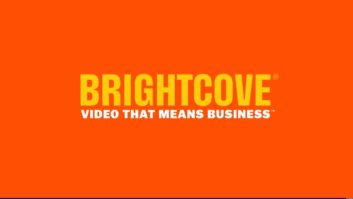
Expert industry advice on the things to consider before you get started
An effective corporate video is one with a purpose, one that meets clearly defined business objectives, and one that engages its target audience. For the viewer, it should do at least one of three things: educate, motivate or resonate – and to always entertain.
The key to achieving this is a good brief. Putting together a brief should not be mistaken as a quick job – it is not enough to say, ‘make it dynamic’ or ‘it needs to be sexy’.
A good brief is fundamental to the success of a video. It is the foundation from which a creative idea is built. It is the checklist that will be used to ensure creative ideas are on point. Remember, the finished video will be a reflection of your brief – so if you provide an inadequate brief then your video will suffer.
Louise Hutchinson-Chatburn is head of strategy at malt films. With over 15 years of experience in corporate video production, she has seen the good, the bad and the ugly when it comes to briefs. Here are her top five tips on what to include in a good video brief, and why.
1 Your business objectives
Why do you need to make a video? What problem do you see it addressing in your business? What exactly do you want the video to achieve?
This is key information that you should ask yourself before putting pen to paper. It is fundamental to your brief, and is what should be used to gauge the success of your video. If your video agency doesn’t fully understand your objectives, they will not be able to help you meet them. Your brief should spell this out clearly and concisely.
2 Your audience
Who do you want to target? What kind of people are they? What do you want them to do or feel after watching the video?
An integral part of the brief is knowing who you are talking to. A useful tip is to try and profile the typical person or persons you want your video to target. For example, give them a name, age, gender and behavioural traits. This information will be used by your video agency to help inform the overall creative – that is, the look, style and feel of the video as well as the trigger points necessary to elicit the desired audience reaction.
3 Your key messages
What do you want the viewer to walk away with?
When trying to establish what your key messages are, it is important not to cram. Remember, less is more. This not about getting as many messages over as possible, it is about selecting the most important in line with your business objectives as well as those most appropriate to your target audience. Unfortunately, no matter how entertaining or creative the video, a viewer can only remember so much. Being precise on messaging and passing this information over to your video agency will help them better control audience ‘take home’.
4 Your distribution plan
How are your audience consuming media? Where is the best place to put your video?
Think about your options. What methods of communication does your business have available… office, event or conference screens, intranet, company website and social media, for example? And, which would best suit your audience? Perhaps a combination can be used to best effect. This is information that can affect the length, format and creative idea and so is essential to your brief. Also stating upfront that a video needs to be re-purposed for more than one delivery channel can save you money in the long run.
5 Your budget and deadline
What are your budget parameters? What is your deadline?
This information should always be included in the brief. This may seem obvious, but it is a common misconception that withholding budget information will result in a better deal. This is not the case. As with all of the points above, this information, alongside the timeframe for delivery, will help inform the creative idea and ensure that what is put forward is achievable.
[email protected] / www.maltfilms.com







